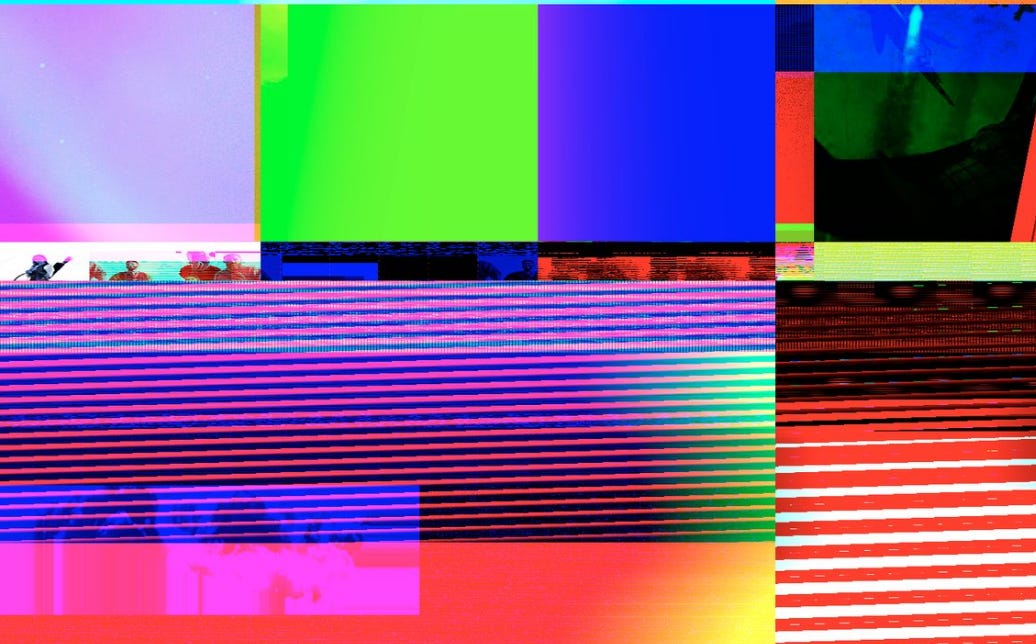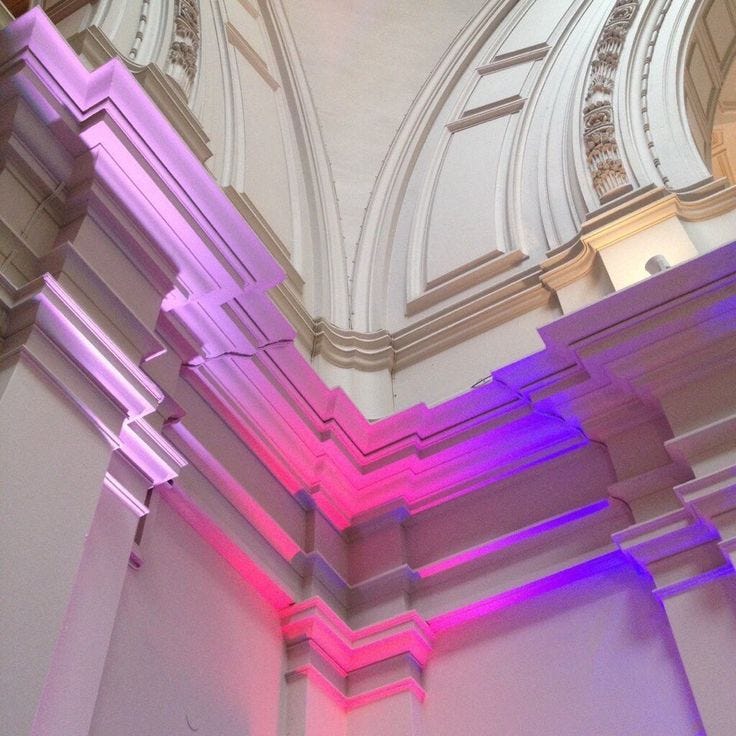Some recent testimonials from clients who’ve benefited from my transformation coaching. If you’re interested, contact me at zeitvillemedia@protonmail.com or go to Work With Me.
“Since working with Paul I’ve started my own business, tripled my income, clarified my purpose, found a great relationship, and most importantly: reconnected with a long-ignored passion. His guidance through all those has been essential, and I would strongly recommend him to any ambitious person looking to grow faster and better understand their calling.”—AJ Pitts, writer at Greco Gum & Pirate Wires, @AJ_Odyssey
“Paul’s guidance has legitimately helped me make more money, align my business with my soul and really help accelerate my inner work. The amount of aha moments I still get every session is insane. Stop thinking and just start working with him.”
—Tiger Joseph, founder & filmmaker, @tigerjvideo
You can also check out my three books here: The Patchwork Manifesto, The Astro Cheat Sheet and Energy Is A Story
It used to be that you couldn’t say this back in the 2010s without risking backlash: why does modern everyday entertainment have strong liberal messaging rather than conservative messaging?
During the populist late 2010s, inspired by a surprise Trump victory in 2016, conservatives began to develop an interesting talking point. Modern everyday entertainment was liberal because, well, liberals were overrepresented in the entertainment world. This gave rise to all sorts of theoretical models. People began to describe a “Blue Cathedral,” a kind of umbrella term for how news, Netflix and political press conferences all shared a distinct blue liberal tint—revealing a level of ideological interconnectedness that was “off bounds” to discuss.
But there was another answer, which itself was revealed in reaction to the Blue Cathedral. Conservatives drummed up attention around right-leaning individuals (at the time) like Jordan Peterson and Dave Rubin. These figures didn’t have control over the larger broadcast networks like mainstream media—because, again, these were part of the Blue Cathedral. So, in response, a Red Church was created using alternative broadcasting tools—specifically social media like YouTube, where younger audiences in a “questioning phase” could find so-called conservative convos outside the more liberal mainstream matrix.
This created what we came to describe as the Culture Wars of the late 2010s. Liberals began to call Peterson and company part of the “Intellectual Dark Web.” Meanwhile, those leaning more to the right took aim at the cancel culture of liberals—saying that free speech revivalism was a natural response to the stuffy censorship of the modern left.
We ended up with a very siloed environment. The 2020 US presidential election was really about the echo chambers we had created in the Culture Wars of the late 2010s. While the outer world had been under physical lockdown during a pandemic, people had been under an ideological lockdown. Each side had retreated to their respective “safe space.”
But, as I’ve been saying for years, 2020 ripped the Big Tent apart. That was the beginning of the end for Super Bowl-style politics.
For about half a decade, people persisted under the typical Us versus Them script, even though collective political spectacles have been losing steam for years. I wrote back in the fall that the political euphoria around Trump’s second win would not mirror the euphoria of 2016. Things are too fragmented now.
American conservatives would realize that part of the problem all along is that they don’t know how to make good art—and without that, their party would splinter. (The left’s problem is that it is a bit TOO good at art, and now they lack direction because they overthink their moves. Woke remakes are one way they shoot themselves in the foot. See the recent debacle around “Snow White,” which lost $115 million.)
True, conservatives were able to muster some impressive propaganda in a short amount of time—particularly in the form of social media memes—but they lacked aesthetic direction and continue to lack it.
In fact, part of the confusion stems from their reactionary critique of the leftist paradigm. While they accurately point out a liberal bias in your average Netflix show, they often overlook the lighting, sound, scripting and narrative pacing of this media—thinking it’s of only secondary value.
Conservatives are sensitive to the “core” of something. That inclination is even hinted at in their name. They tend to think that aesthetics are window dressing, preferring instead to seek out the core message. But this is problematic, because it leads them to define aesthetics as propaganda, and so often when they try to make art, what they try to make is “artful propaganda.”
This is why right-leaning “art” can come off as corny, campy, precious or ham-fisted. They’re trying too hard to reclaim cultural territory that doesn’t even exist, like they’re urgently trying to say “it’s our turn now.” Problem is, audiences don’t work like that anymore. America is no longer a civil society where everyone sits around watching everyone else’s propaganda and goes, “Well, that was a cunning attack from your side, we’ll have to agree to disagree.”
Audiences, even those with “shared values” or that fight on the “same side,” are falling apart. And we’re at a point now where conservatives starting to admit this to themselves. Like this MAGA-friendly poster who realizes the euphoria from November 2025 is fading, leaving him unable to connect the past to his present experience. He feels like Hamlet—a man outside of time, adrift in the wreckage of two dusty old political parties. See below.
Let’s dive in and unpack this situation.
Defund the Media/Defend the Media
The Greek had this concept of telos or teleology, which the philosopher Hegel picked up, because he was interested in observing the arc of history. If man lacks a telos, he feels like a man outside of time. And that’s where many find themselves at this spring, I believe. Lost, adrift, like Hamlet back in his hometown after school.
With the end of Big Tent culture now apparent to everyone, both right and left, they are left naked and exposed to a brave new world. There are no safe spaces anymore.
There are no clean corners where someone can say “this is right-wing coded” or “this is left-wing coded.” They try with all their might and power. But their grip loosens each try. Essentially, these people are out of touch. Neither knows how to make impactful art anymore—the kind that would give political parties a “wholeness”—and so we have people (at least in America) crying out for meaning and beauty.
It’s no wonder that what grows out of this chaotic landscape is a song by Kanye West titled “N***** Heil Hitler.”
We’ve reached some terminus. We’ve forgotten how to produce beauty, like we’ve forgotten the space technology to land on the Moon again. Beyond this point we have to decide if art is possible for our culture anymore. That’s a tough decision.
Disagreement is fine and sometimes conflict is preferable. But the fight between the American left and right—which WANTS to be done on aesthetic and memetic terms—just isn’t happening. Neither knows how to create anymore, because we’re in such a warped and rapidly shifting context.
No guy in a suit is going to invite the two of you on to have some kind of tasteful debate that people talk about at the office the next morning.
Instead, we are rapidly descending into mob mentality, moral panic, purity spirals and witch hunts—a contagious wildfire that threatens to create significant tensions in America.
Back in March, I wrote a newsletter called “New Heroes for New Mythologies.” I said that the new media narratives would be around violence and action, instead of surveillance and safe spaces. Here is where I get to explain to you why. It’s because when people lack elegant tools of expression, they go into more kinetic forms of conflict or, at the very least, more provocative rhetoric.
Let’s keep going.
You Are The Tiger’s Lunch
I want you to imagine a landscape with me for a moment.
Imagine a place like Washington, DC, the capitol of America. If you’ve never been there or seen pictures, it features impressive architecture made of marble. Uplifting beauty in the form of classical Greek and Roman architecture signifies to the observer that this is a nation built on durable values—it’s connected by teleology to a longer historic arc, bending towards the inalienable rights of man.
Beauty speaks to a more transcendent, spiritual state we are trying to achieve, in other words. It inspires us.
But now imagine marble ruins. See the rubble, the pieces of buildings strewn across the landscape. Graffiti is everywhere. The white marble has become a canvas for slurs, hashtags and other cultish mementos that tribes use to identify each other with.
Yet, some time has passed. In the half decade since 2020, new life and vegetation has begun to emerge from the cracks. This rewilding of the landscape isn’t entirely comforting. Trees and grasses appear randomly, making it hard to traverse the terrain, obscuring clear vision and navigation. Other forms of wilderness have returned, too, along with an impressive showing of flora. It’s more jungle than orderly Greek public square.
Civility, rationality and collective discourse seem to be very far away.
Suddenly, you hear a scream. It’s one of the graffiti artists. You look at the can of spray paint in your own hand. Was it one of your tribe? Could you be next? You’ve heard rumors of what’s been happening lately. . .
Feral philosophies are roaming the ruins and vegetation, ready to consume anyone who’s out and attempting to create according to the old rules.
The funny thing is, getting attacked might be the best thing that could happen to you. Like a monster surging from the unconscious, you’re going to see all manner of intense exchanges (or even convos with self) in the middle of May. It could create a feeling of being hunted, consumed or severed.
Stronger, unrefined and more beastly forms of thinking will challenge your old domesticated ways of expressing yourself. To survive, you may have to give up old boxes, categories, labels and affiliations. It could happen quickly, in a split second.
You may come to learn that your ideas were paper thin. We have a saying, it’s called “paper tigers”—things that pose no real threat at all. That could be many people’s worldview, like the social media post I linked above, where all that euphoric roaring back in November is now a quiet whimper.
If any political party is to have a chance in the second half of the 2020s, they’ll need to become more like the tiger here, nomadically lurking in the ruins. But maybe only after they face an “egoic death” head on.
Meanwhile, in the micro world, you may be confronted with sudden and destabilizing philosophies that actually bring new forms of security and creativity.
You may find that you were playing it safe with certain people, places and things. I’m sure most of us liked and even preferred the old marble world, where order prevailed.
But those safe spaces are gone and now you need new creative tools to survive. It’s time to let your brain undergo a rewilding. Expression must be faster, more instinctual.
Let’s wrap up with some final thoughts.
Survival of the Artistic
Of course, there will always be a herd mentality at play in all these macro trends we discuss. I have no doubt that many people will begin calling for a holy crusade by June. It’s highly possible that race relations in America become more strained as we go into summer.
But I’m somewhat skeptical that things will spiral into an all-out melee. Perhaps it’s because we’ll see a rise of military and police intervention, or even martial law. But I think the chaos will be managed, even as tensions build like a pressure cooker.
Eventually, this will give rise to a re-segmented or re-segregated society with multiple podcasts, shows and media platforms grabbing for your attention. There won’t be just one or two or three experts, but several.
Lacking any safe space, people will be more nomadic rather than sedentary. Because consistent values among the American right and left are dissolving, you’ll see a proliferation of micro-tribes that have some of this flavor, some of that flavor.
It’ll be harder and harder for people to create universal messaging that captures a broad audience, on the level of 50% of the country.
In your own individual life, you could be breaking away from dependency on certain routines or habits that keep you locked in a never ending loop.
Instead of living within rigid lines, you may be considering curves and zigzags. Things that have been percolating in the background for you will seem suddenly obvious, sending you straight into the line of battle with an old self. In this holy crusade, you may remove egoic opposition to new ways of doing things. You might even wonder why it took you so long to break out—to look at an old issue from a new angle.
By removing your safe space requirements, you become more free to roam. Sure, it’s frightening. You could be a tiger’s next lunch. But the freedom is worth it. You’re equipped with a feral philosophy after a brush or two with “death”—and nothing can make you go back into that little box you once put yourself inside.
Some recent testimonials from clients who’ve benefited from my transformation coaching. If you’re interested, contact me at zeitvillemedia@protonmail.com or go to Work With Me.
“Since working with Paul I’ve started my own business, tripled my income, clarified my purpose, found a great relationship, and most importantly: reconnected with a long-ignored passion. His guidance through all those has been essential, and I would strongly recommend him to any ambitious person looking to grow faster and better understand their calling.”—AJ Pitts, writer at Greco Gum & Pirate Wires, @AJ_Odyssey
“Paul’s guidance has legitimately helped me make more money, align my business with my soul and really help accelerate my inner work. The amount of aha moments I still get every session is insane. Stop thinking and just start working with him.”
—Tiger Joseph, founder & filmmaker, @tigerjvideo








